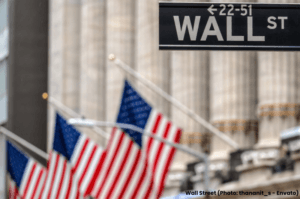
OpenAI — the powerhouse behind ChatGPT — is setting the stage for what could become the most consequential initial public offering (IPO) of the decade. Reports indicate the company is preparing to go public with a target valuation of up to $1 trillion (USD), a figure that would place it among the most valuable firms ever to debut on a stock exchange.
Setting the Stage
OpenAI’s potential IPO would mark a new era — not only for artificial intelligence but for the modern technology market itself. Sources familiar with the company’s plans told Reuters that OpenAI is quietly assembling the financial and structural framework for a listing as early as 2027, following a likely filing period in late 2026.
If executed as envisioned, the offering could raise at least $60 billion, providing OpenAI with the capital to expand its computing infrastructure and accelerate development toward artificial general intelligence (AGI).
Why Now?
This move comes as OpenAI transitions from a capped-profit hybrid into a more conventional corporate structure — one designed to invite public investors while maintaining its original mission under a redefined governance model.
Microsoft remains OpenAI’s largest strategic backer, holding roughly 27 percent after several funding rounds. Yet the company has worked to lessen its dependency on the tech giant, both to preserve autonomy and to position itself as an independent leader ready for Wall Street scrutiny.
At the same time, the artificial intelligence sector is maturing. Capital requirements are skyrocketing as model training costs soar into the billions, data-center construction becomes mission-critical, and global competition from Anthropic, Google DeepMind, and Meta intensifies. Going public could be the most direct path for OpenAI to sustain its ambitions without relying solely on private funding.
The Pillars of the Deal
Valuation target: Up to $1 trillion.
Estimated raise: At least $60 billion.
Expected filing: Second half of 2026.
Possible listing: 2027.
Corporate model: Transitioned from capped-profit to open for-profit structure.
While no specific exchange has been named, the New York Stock Exchange (NYSE) and NASDAQ are both reportedly contenders. Insiders expect a dual-class share structure, giving OpenAI’s leadership — including CEO Sam Altman — greater long-term control.
Implications for the Market
A successful OpenAI IPO could reshape how the world values artificial intelligence. Beyond its staggering valuation, it would symbolize AI’s transition from private innovation to a publicly traded industrial force.
For investors, the move provides a direct route to participate in AI’s long-term growth rather than relying on indirect exposure through Microsoft.
For markets, it would set a new precedent — likely drawing comparisons to the historic public debuts of Apple, Google, and Meta, each of which defined a generation of technology investing.
For competitors, it may trigger a race to revalue, merge, or go public themselves as the industry realigns around scale, data, and computational capacity.
The Broader View
While the valuation headlines capture attention, the real story lies in what this means for accountability, governance, and long-term direction. Once public, OpenAI will face quarterly reporting, regulatory oversight, and institutional investor expectations — conditions that can test even the strongest corporate missions.
Will OpenAI balance its lofty AGI vision with the demands of shareholders? Will transparency and profit expectations alter its trajectory? Those are the questions defining this next chapter.
What to Watch
- Filing confirmation: when OpenAI submits its S-1 filing to the U.S. Securities and Exchange Commission (SEC)
- Lead underwriters: which investment banks take the deal
- Revenue transparency: what financial disclosures reveal about real monetization of ChatGPT and enterprise licensing
- Governance balance: how OpenAI aligns investor returns with its original “benefit of humanity” clause
- Regulatory climate: how evolving AI legislation in the U.S. and Europe may affect market appetite
The Wallet Perspective
For entrepreneurs, executives, and investors alike, this IPO represents the market’s declaration that artificial intelligence has become a core industry shaping global economics.
When OpenAI rings the opening bell, it will officially mark the dawn of a new economic era powered by intelligence itself.































